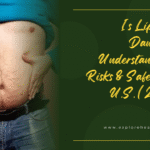Vaccines are one of the most effective tools we have to protect children from serious illnesses. But for many parents, especially new ones, keeping up with the pediatric immunization schedule can feel overwhelming. When should your baby get their first shot? What boosters are needed for school-age kids? Are there new updates for 2025?
In this article, we break down the latest U.S. pediatric immunization schedule, why it matters, what’s changed in recent years, and how you can stay on track to keep your child healthy and protected.
Why the Pediatric Immunization Schedule Matters
The pediatric immunization schedule is a carefully researched, evidence-based timetable that outlines when children should receive each vaccine to ensure the best protection against preventable diseases.
Following the schedule is important for:
- Individual protection – safeguarding children from diseases like measles, polio, whooping cough, and more
- Community immunity – protecting those who can’t be vaccinated, such as newborns or immunocompromised individuals
- School and daycare compliance – most U.S. states require up-to-date vaccinations for school enrollment
The schedule is updated annually by experts from the Centers for Disease Control and Prevention (CDC), American Academy of Pediatrics (AAP), and Advisory Committee on Immunization Practices (ACIP). You can view the official schedule on the CDC immunization schedule page.
Pediatric Immunization Schedule 2025: At a Glance
Here’s a simplified version of the 2025 immunization schedule for children from birth through 18 years old:
Birth to 6 Years
| Age | Recommended Vaccines |
| Birth | Hepatitis B (1st dose) |
| 2 Months | DTaP, IPV, Hib, PCV15, RV, HepB (2nd dose) |
| 4 Months | DTaP, IPV, Hib, PCV15, RV |
| 6 Months | DTaP, IPV, Hib, PCV15, RV, HepB (3rd dose), Flu (if in season) |
| 12–15 Months | MMR, Varicella, Hib, PCV15, HepA (1st dose) |
| 15–18 Months | DTaP (4th dose), HepA (2nd dose, at least 6 months after 1st) |
4 to 6 Years
- DTaP (5th dose)
- IPV (4th dose)
- MMR (2nd dose)
- Varicella (2nd dose)
7 to 10 Years
- Catch-up vaccines if behind
- Annual Influenza vaccine recommended
11 to 12 Years
- Tdap (booster)
- HPV (2-dose series if started before age 15)
- Meningococcal ACWY (1st dose)
16 Years
- Meningococcal ACWY (2nd dose)
- Meningococcal B (recommended, depending on risk factors)
What’s New in the 2025 Pediatric Immunization Schedule?
Each year, health experts update the immunization schedule based on the latest science. Here are some updates and clarifications made for 2025:
1. PCV15 replaces PCV13
The pneumococcal conjugate vaccine has been updated to PCV15, offering broader protection against more strains. This applies to infants starting at 2 months.
2. Updated guidance on HPV
CDC encourages earlier HPV vaccination (as early as age 9), especially in populations with lower vaccine uptake. In some states, it’s now required before middle school entry.
3. Stronger flu vaccine recommendations
Following the severe 2023–2024 flu season, children as young as 6 months are urged to receive the flu shot annually, particularly those attending daycare or preschool.
For complete updates and clarifications, refer to the CDC’s official immunization schedules.
Understanding Common Vaccines in the Pediatric Schedule
Here’s a breakdown of the most commonly administered pediatric vaccines and what they protect against:
DTaP
- Protects against diphtheria, tetanus, and pertussis (whooping cough)
- Given in 5 doses from 2 months to 6 years
MMR
- Protects against measles, mumps, and rubella
- Two doses required, starting at 12–15 months
IPV
- Protects against polio
- Given in 4 doses, with the final dose at 4–6 years
Hib
- Protects against Haemophilus influenzae type b, which can cause meningitis
- 3–4 dose series depending on the vaccine brand
Varicella
- Prevents chickenpox
- Two doses recommended
Hepatitis A and B
- Protect against liver infections caused by viruses
- HepA: two doses starting at 1 year old
- HepB: three doses beginning at birth
What If My Child Misses a Vaccine?
Don’t panic if your child is behind. The CDC provides catch-up schedules for children and adolescents who fall behind. Pediatricians can help realign your child with the current recommendations without restarting entire series.
Most schools accept catch-up documentation, and all 50 states allow time to complete missed vaccines before enforcement of school exclusion policies.
Vaccine Safety and Public Confidence
Vaccines are thoroughly tested, monitored, and continually reviewed for safety. In the United States, vaccine safety is tracked through programs like:
- VAERS (Vaccine Adverse Event Reporting System)
- Vaccine Safety Datalink (VSD)
- Clinical Immunization Safety Assessment (CISA) Project
According to the American Academy of Pediatrics, vaccines undergo more rigorous safety checks than nearly any other medical product. Side effects are usually mild—like swelling at the injection site or low-grade fever.
Pediatric Immunization Laws in the U.S. (2024–2025)
School and Daycare Requirements
All U.S. states require certain vaccines for public school entry, though requirements vary slightly by state. Most include:
- DTaP, MMR, IPV, HepB, Varicella
- Tdap and Meningococcal for middle/high school
Exemptions
- Medical exemptions are universally allowed.
- Religious exemptions are permitted in 44 states.
- Philosophical exemptions are allowed in 15 states but are increasingly under scrutiny.
As of 2025, several states, including California and New York, have tightened exemption policies following measles outbreaks linked to unvaccinated children.
You can check your state’s immunization laws on the Immunization Action Coalition website.
Tips for Parents Navigating the Schedule
- Keep a vaccine record – Use a printed immunization card or your state’s digital vaccine registry
- Ask questions – Your pediatrician is your best source for vaccine guidance
- Use reminders – Set calendar alerts for your child’s upcoming vaccines
- Check insurance – Most plans, including Medicaid, cover all recommended pediatric vaccines
Addressing Vaccine Hesitancy
It’s natural to have questions or concerns. The key is to seek information from evidence-based sources. Pediatricians, nurses, and local health departments can explain vaccine benefits, side effects, and address any myths or misinformation.
For science-backed resources, visit:
Conclusion
The pediatric immunization schedule is more than a list of dates—it’s a blueprint for keeping your child safe from preventable diseases. With public health data showing a resurgence in diseases like measles in areas with low vaccination rates, sticking to the recommended schedule has never been more important.
Thanks to strong healthcare systems, scientific advancements, and accessible vaccine programs in the U.S., most children can follow the immunization timeline with ease. Make sure your family is protected by staying informed, asking questions, and scheduling routine well-child visits.
Don’t wait until school enrollment or an outbreak to get your child vaccinated. Review the current pediatric immunization schedule, talk to your child’s doctor, and ensure your child is up to date on all vaccines. It’s one of the simplest and most powerful ways to keep them safe and healthy.
About ExploreHealthToday.com
ExploreHealthToday.com was created to be a one-stop resource where readers can find up-to-date, well-researched articles on a variety of health topics. From nutrition and wellness to lifestyle and mental health, we strive to provide reliable information to help you make informed decisions about your well-being.
We believe that good health starts with good information, and our mission is to empower our readers with knowledge they can trust.
Visit us at ExploreHealthToday.com to learn more.





